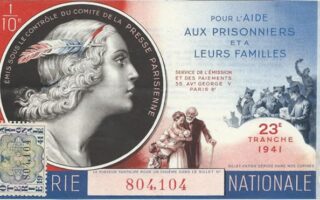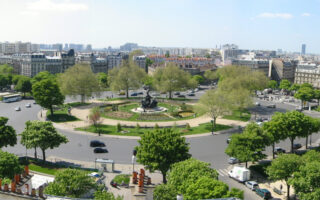Paying Homage to Claude Parent, the Brilliant 20th Century Architect

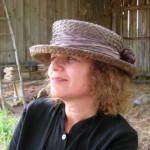
- SUBSCRIBE
- ALREADY SUBSCRIBED?
BECOME A BONJOUR PARIS MEMBER
Gain full access to our collection of over 5,000 articles and bring the City of Light into your life. Just 60 USD per year.
Find out why you should become a member here.
Sign in
Fill in your credentials below.
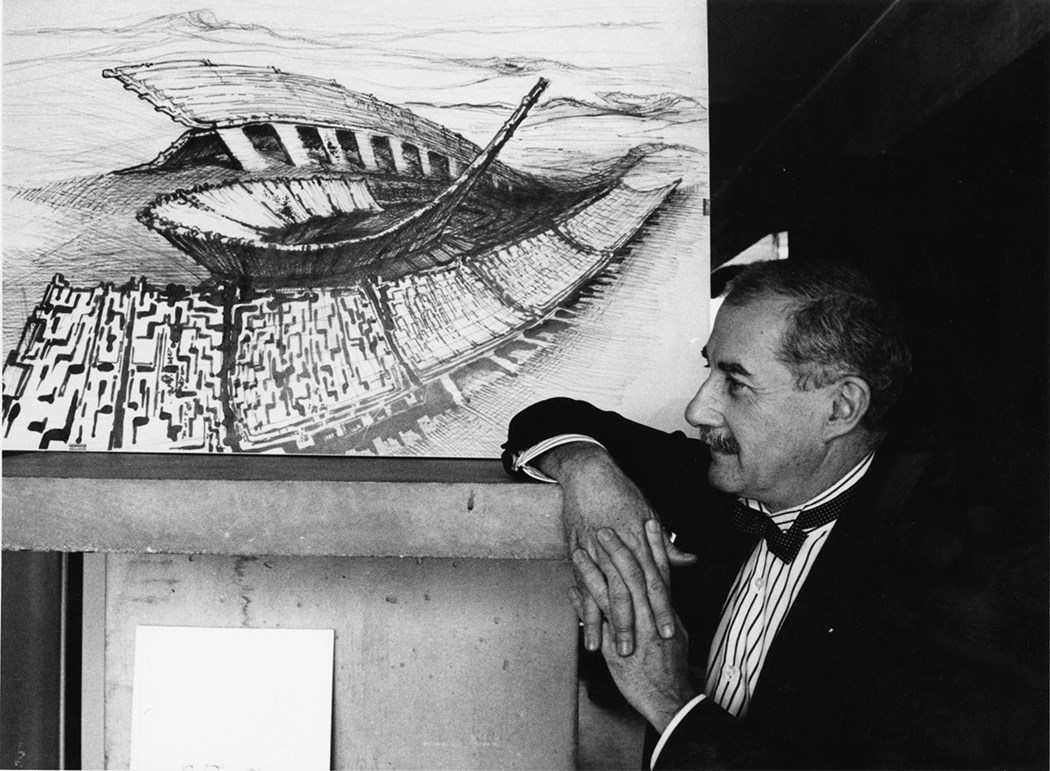
Claude Parent in middle-age
Claude Parent was never an ordinary architect. He rejected his traditional training and chose a radically dramatic direction designing buildings on the oblique plane rather than the horizontal and vertical. His career became flamboyantly iconoclastic and provocative in its more than 70-year span.
Born in Neuilly-sur-Seine, a suburb of Paris, in 1923, Parent first applied his mind to Latin, Greek and theoretical mathematics. He was then drawn to study at the School of Architecture and Fine Arts in Toulouse under Noël Le Maresquier, an architect well-known for reconstructing the port city of Saint Nazaire along the Atlantic Wall after it was bombed in WWII. The Atlantic Wall was an extensive system of heavily-fortified bunkers built by Nazi Germany between 1942 and 1944 along the east coast of continental Europe as a defense against an anticipated Allied invasion during World War II. Unbeknownst to Parent at the time, Le Maresquier’s re-design of this area would become a defining force in the trajectory of his career.
In 1949 Parent returned to Paris and continued his studies at the École des Beaux-Arts’s Academy of Architecture. He was 26 years old when he met Ionel Schein, a Romanian-born, French architecture student, who would go on to become a pioneer in the use of synthetic materials, creating the first plastic house. Parent and Schein worked together designing and building houses until 1955. They were also students of the urban modernist, Le Corbusier, their association brief though inspirational. Corbusier was one of the first architects to use “béton brut” (rough concrete), which gave rise to the style known as Brutalism.
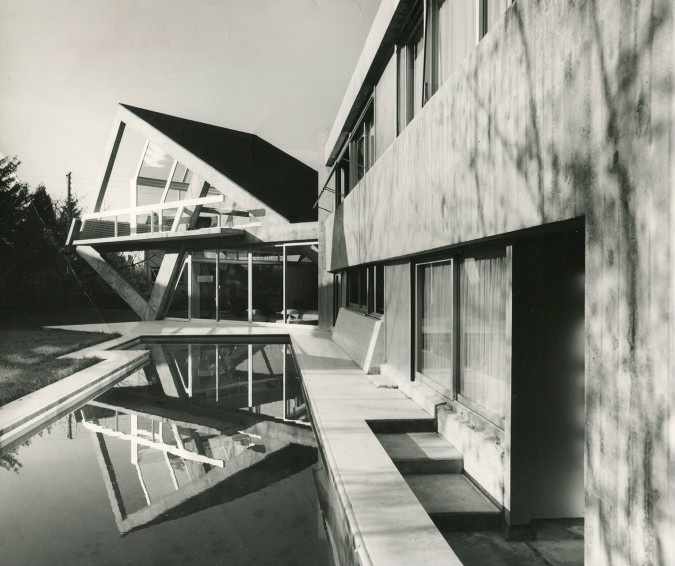
La Villa Drusch in Versailles. Photo credit: artfund.org/ Lumières de la Ville
Parent continued to meet many remarkable people who would influence him, among them, André Bloc, a sculptor and founding editor of the magazine, Architecture Today. Parent became part of Bloc’s entourage of avant garde artists and architects, which included Nicolas Schöffer, a sculptor who translated the work of of the Dutch painter Piet Mondrian into the visual language of spatial dynamics. Schöffer created a sculptural architecture imbued with ideas of Russian constructivism, de Stijl, and the Bauhaus movement, which until then were completely unknown and enthralling to Parent. Following his meeting with the wildly controversial realist painter, Yves Klein, with whom he collaborated and who would remain a friend until Klein’s untimely death at the age of 34, and lastly, Paul Virilio, an urban planner and cultural theorist concerned with technology and speed, with whom he would later work.
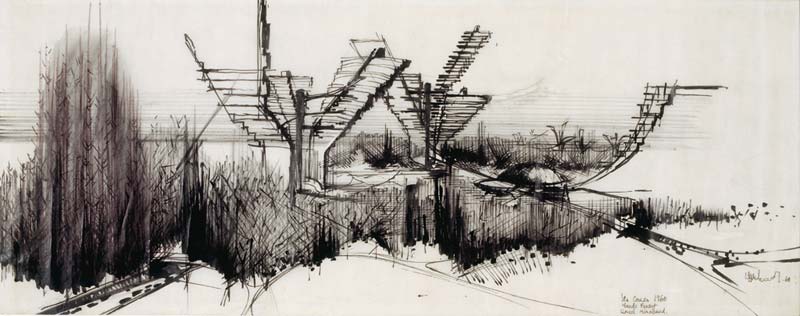
Les Villes cônes, 1960. Drawing by Claude Parent, courtesy of FRAC
Shaped by World War II as a young man growing up in Nantes not far from the Atlantic Wall, Paul Virilio introduced Parent to the abandoned bunkers left to weather time and the elements on the rugged beaches along the Atlantic coast in various angles of repose. Climbing inside of one such bunker, they both experienced vertigo. Of this encounter Parent wrote, “Inside you tumbled through a strange room, the floor was so sloped that you couldn’t tell whether what you were standing on was a slanted wall or floor.” From that moment, Parent became fascinated with the idea that the fluidity of a confined space could be radically distorted by tilting its axis, while Virilio became absorbed by the social possibilities that redefined the use of such spaces. Parent and Virilio opened their firm, Architecture Principe, in 1963. Their joint obsession became the guiding principle of their Oblique Architecture style.
The two men soon found themselves caught between revisiting the past and creating something new. While the pre-war architects rejected modernity, their post-war counterparts seized it with a passion. Parent dismissed the typical notion of vertical cities with perpendicular buildings, imagining instead an oblique, utopian world where the inhabitants lived mainly as mountaineers on slopes, creating a new interpretation of space based on the human body in motion. Their first building, the church of Saint-Bernadette du Banlay in Nevers, France (1963), reflects a combination of the suffering that Europeans experienced throughout World War II, and the jazzy, imbalance of liberation. There is nothing charming, quaint or religious about the Church of Saint-Bernadette. It is a concrete, monolithic, defensive fortress with floors that slope towards the altar and walls that tilt – static and controversial. Upon completion, it brought tears of shame to the eyes of the nuns who graced its premises, and the architectural community thought it supremely ugly. It portrayed no historical relevance or regard for its environment.
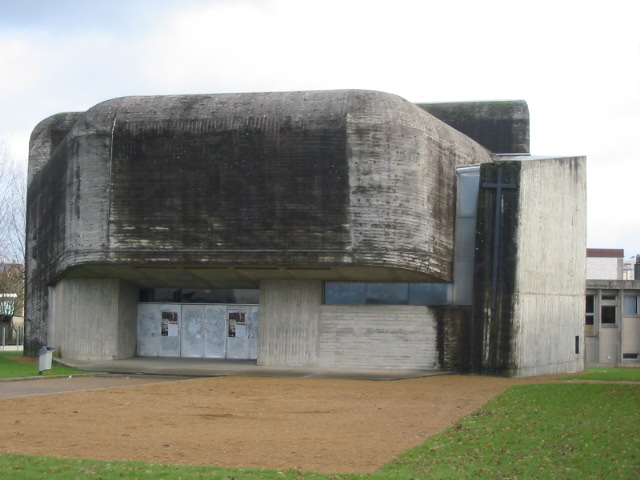
L’église Sainte-Bernadette du Banlay in Nevers by Cypris/ Wikimedia Commons
It was with projects such as this that Parent carved out the niche that would define him as irreverent, unorthodox and unpredictable. For seven years, he lived with his family in an unfurnished house he designed with sloping floors. It wasn’t in the slightest degree practical, but it was whimsical. He used to boast that plans for every building he ever designed were initially rejected.
Parent’s next project was the Villa Drusch in Versailles, a house that looks as if it fell from the sky and imbedded itself into the ground. Then came the GEM Commercial Center at Sens with three ramped walkways on the front facade, and several nuclear power plants in northern France. In 1970 he designed the French Pavilion for the Venice Architecture Biennale and won the Grand Prix National de l’Architecture. In 1990 Parent became an Officer of the Legion of Honor, and in 2005, a member of the Académie des Beaux-Arts. But his work fell out of vogue in the 1980s, and in 2000, at the age of 77, he closed his office.
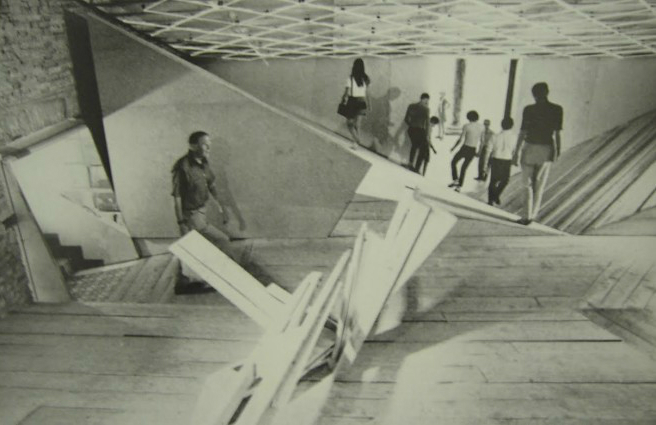
The French pavillon at the Venice Biennale (1970). credit: Lumières de la Ville/ Digital StillCamera
As so often happens in France, what was once considered scandalous subsequently became honored, and in 2005, the church of Saint-Bernadette was declared an historic monument. The Cité de l’architecture et du patrimoine (the Paris architecture museum) held a retrospective of his work in 2010, following which he retuned to the Venice Biennale at the request of Dutch architect, Rem Koolhaas, creating an entirely ramped room for his exhibition. His oblique designs were also a feature of the Tate Liverpool’s Biennale in 2014.
Parent continued to illustrate his lyrical visions for a utopian city through drawings that explored the movement of populations. “I wish I could live long enough to see a future civilization based upon permanent traveling all over the world,” he wrote, “with people circulating on massive roads that transform into buildings and cities where people can come and go. Let’s unfurl onto the Earth passages that billow like continuous ribbons.”
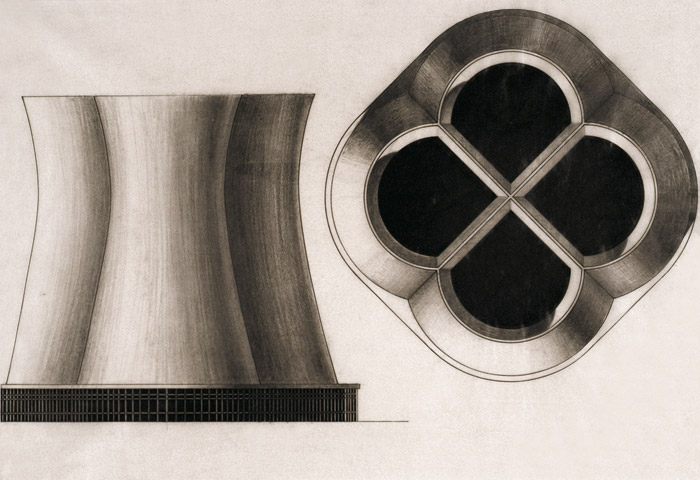
Claude Parent’s design for a nuclear power plant (1975). Courtesy of FRAC/©François Lauginie
Nothing was wasted in Parent’s life. He was a radical thinker who built upon all of his experiences and became a true visionary. His body of work has influenced many contemporary architects, including Rem Koolhaas, the Dutch architect, Japanese architect Sou Fujimoto, the American Frank Gehry, the Iraq-born Zaha Hadid (the first woman to win the coveted Pritzker Prize), and Frenchmen François Seigneur and Jean Nouvel, who were two of his interns. Nouvel dedicated the new Paris Philharmonic in the city’s Parc de La Villette to Parent.
One of France’s most significant 20th century architects, Claude Parent died in February, 2016, in Paris, just one day after his 93 birthday.
Lead photo credit : Claude Parent in middle-age

